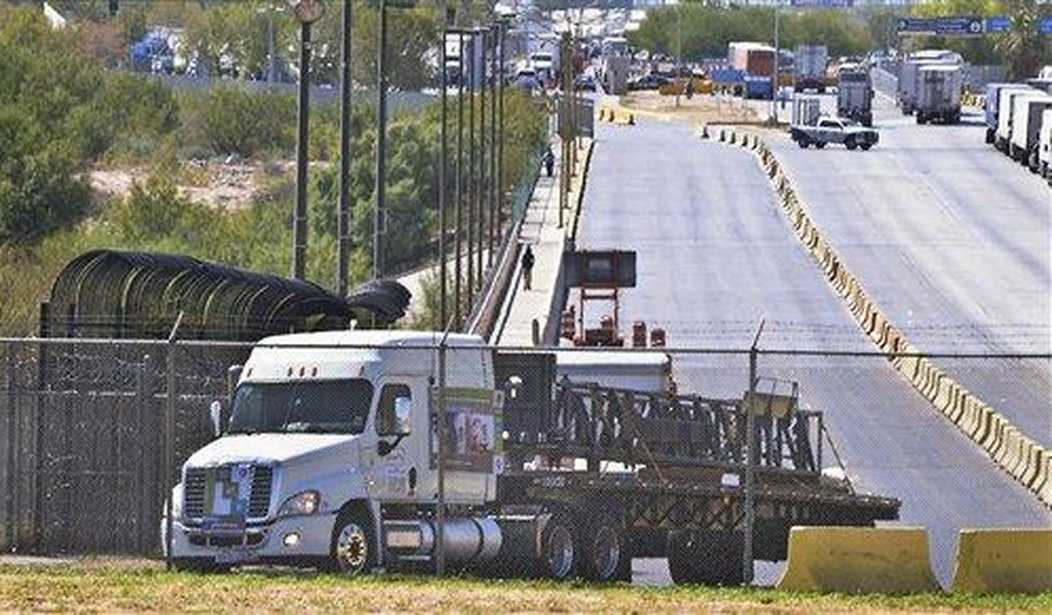15 years ago, in what was, essentially, a different world with a brighter future, the California Air Resources Board (CARB) enacted regulations mandating the installation of mileage and pollution control devices on what they considered to be pollutant heavy vehicles. They had a semi-reasonable phase-in plan all set to go that, as these things do when fanatics take over, has morphed through the years into a monster. They’ve moved from making existing vehicles more energy efficient and cleaner running to banning them altogether.
In 2008, the California Air Resources Board (CARB) approved legislation designed to curtail emissions from older trucks and buses operating within the state. Known as the “Heavy Duty Vehicle Greenhouse Gas Emission Reduction” measure, the law originally called for long-haul truckers to install specialized tires and aerodynamic devices on their trailers that improved fuel economy. However, it’s gone through numerous updates over the years, eventually making it illegal to even operate certain vehicles equipped with the wrong kinds of engines. The latest update bans any truck with a gross vehicle weight rating (GVWR) over 14,000 pounds using an engine manufactured before 2010.
These bans aren’t new. California began prohibiting older trucks and buses from hitting the road over a decade ago – and updates approved by CARB have kept pace to ensure vehicles utilizing older motors aren’t allowed to go anywhere. In 2020, the cutoff for diesel engines applied to anything manufactured prior to 2004. This year, the line has been drawn at 2010.
As of 1 January, the ban on any diesel engine made before 2010 went into effect. The cost of trying to get your rig – or your fleet – up to speed to be able to stay in business in CA has been enormous, and not at all successful for many truckers, especially independents.
…FW Trucking owner Tim Thomas’ diesel fleet, like many others in the state, are scrambling to meet the regulations implemented by the California Air Resources Board (CARB) in 2008. CARB now requires most diesel trucks to have the newest generation of advanced diesel technology. The new requirements ban all diesel vehicles over 14,000 pounds and built before 2010 from operating in California.
“It’s been an ongoing process of problems trying to obtain new equipment that isn’t ready or perfected yet,” Thomas said. “We’re just now getting the parts we need that haven’t even been CARB-certified yet.”
…Exceptions to the rule will be made for vehicles that have replaced their engine with one manufactured after 2010, and for vehicles that travel less than 1,000 miles a year. Thomas says this exception is unreasonable due to the difficulty obtaining parts.
“Whenever you pass a law and the technology isn’t there, the manufacturers will only put out what they can,” said Thomas. “It’s the nature of the business that these trucks travel many miles a year.”
The trucking industry has pushed back on the ban, especially in light of recent supply-chain issues across the country due to the COVID-19 pandemic. Not only have parts been difficult to obtain, but the pandemic created a backlog leaving truckers in significant debt.
Welp. There’s nothing so wonderful as like-minded bedfellows when you’re going to Hell in a handbasket and taking your state with you. On Friday, Biden’s EPA bought off on the CA plan to phase out HALF OF ALL diesel truck sales by 2035.
It's like California wants to keep ruining itself https://t.co/6Nsya9lVG8
— Daily Caller (@DailyCaller) April 1, 2023
Brilliant, just brilliant. Besides the financial constraints on dang near everyone…
Today, the EPA approved California's plan to phase out diesel trucks by 2035 but Raley's CEO Keith Knopf says "if you're not a huge operator, [this plan] will put you out of business." pic.twitter.com/QcesTZePsa
— PRI (@PacificResearch) March 31, 2023
…CA keeps forgetting it can’t keep the lights on on a cold winter’s day/hot summer night right now. What on EARTH do they think they’re going to do in 12 years? Have it all fixed?
…But Wayne Winegarden, a senior fellow at the Pacific Research Institute, said it’s too soon to adopt the California standards.
“The charging infrastructure is certainly not there,” he said about powering stations for electric vehicles. “And on top of the charging infrastructure, we have the grid issues.”
While California was hit this winter by atmospheric rivers that soaked much of the state, it has for years suffered from drought conditions, and in September, a brutal heat wave that put its electricity grid to the test.
Don’t forget – everyone’s car is supposed to be electric AND THEIR HOMES, as they do away with natural gas. They’ve got their sights set on the commercial trucking industry being ALL EV by 2045. Where does all this power magically come from? They don’t have what they need for what they have now.
Never mind piddling details – let’s just plow forward, demand the Green dreamers.
…California activists Andasan and Brenda Huerta Soto, an organizer with the People’s Collective for Environmental Justice, are troubled by the impact of pollution from trucks and other vehicles on communities with a large population of residents of color that live near busy ports in Los Angeles, Oakland and other cities as well as warehouse-dense inland areas.
Huerta Soto works in Southern California’s Inland Empire, where a high concentration of trucks pass through to transport goods. On top of truck pollution, the many cars, trucks and trains that travel through the area burden residents with noises, odors and pollutants these vehicles emit, she said.
“We have the technology, and we have the money” to move toward zero-emission vehicles, she said.
Empty chirping when, in fact, you don’t have the technology, or you’d be able to run your air conditioner, you fool. I guess if you chant it enough it happens or you pass out and don’t notice it didn’t.
Let’s talk about having that technology and infrastructure for a second, shall we? What are the projections the state will need to keep semis on the road if they’re electric, at the numbers required to keep shipping alive in this country?
Using a Tesla semi as the metric:
…California state officials, according to the Wall Street Journal, estimate the state will need 157,000 semitruck chargers by 2030 to support their proposed rules for electric semis.
The average cost of a high-level passenger charging station is about $500,000 each. At that rate, the state will need $78.5 billion to cover the cost of the chargers. Since large rigs will need a lot more power, it’s likely the stations will cost more.
National Grid, a northeast U.S. utility company, performed a study that estimated a single Tesla Semi charging station would require the same amount of power as a small town.
Think about it -they can’t keep the lights on in a small town in CA right NOW.
When all these unicorns come home to roost, it’s not just California – it’s the country. Goods and services, food, vital supplies, fuel – trucks move so much of our lives.
…“The state and federal regulators collaborating on this unrealistic patchwork of regulations have no grasp on the real costs of designing, building, manufacturing and operating the trucks that deliver their groceries, clothes and goods,” said Chris Spear, president of the American Trucking Association, in a statement.
“They will certainly feel the pain when these fanciful projections lead to catastrophic disruptions well beyond California’s borders,” he added.
They are all out of their malevolent minds.








Join the conversation as a VIP Member